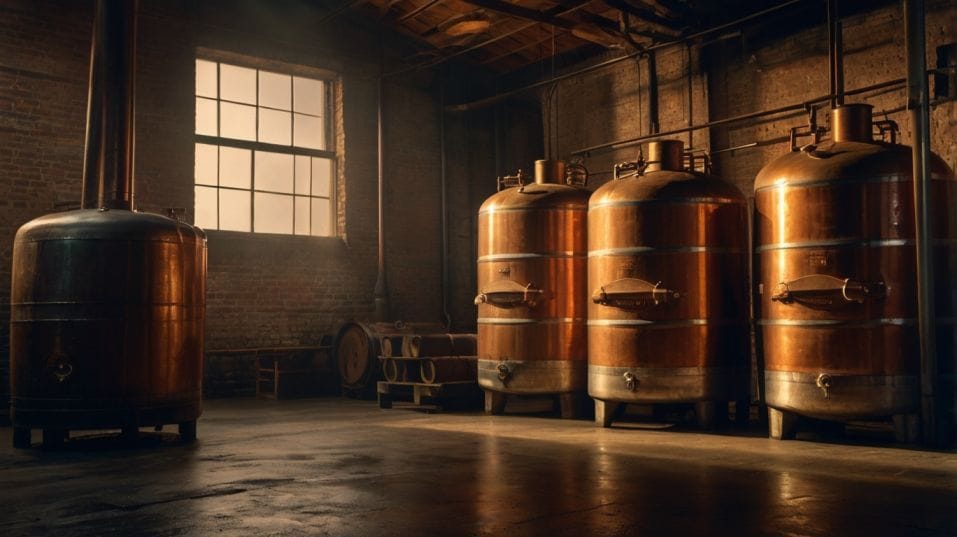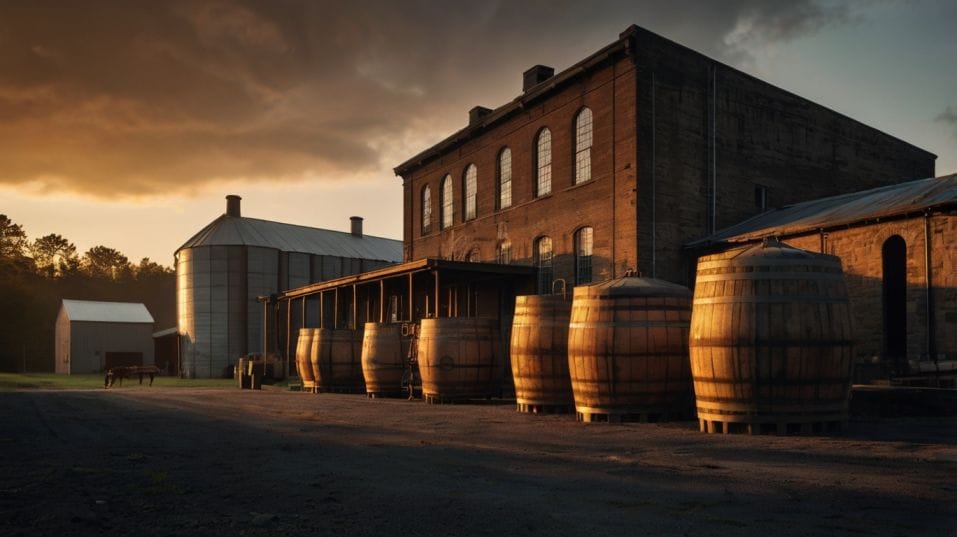Bourbon Belt Breakdown: Kentucky vs Tennessee
Kentucky vs. Tennessee whiskey—learn the key differences in style, aging, and flavor so you can sip, collect, and taste with more confidence.

What if the key to understanding whiskey isn’t just what’s in the glass—but where it’s from? Kentucky and Tennessee are neighbors on the map but worlds apart in whiskey philosophy. One leans on legacy.
The other filters tradition through innovation. If you’re starting your whiskey journey, knowing the difference can sharpen your taste, guide your collection, and deepen your appreciation from the first sip.
Kentucky Bourbon: Backbone of American Whiskey
Kentucky didn’t invent bourbon, but it turned it into an institution. If you want to understand what makes whiskey work, this is where you look first.
What Makes It Bourbon
Legally, bourbon can be made anywhere in the U.S.—but about 95% of it still comes from Kentucky. That’s not a coincidence. The state’s limestone-filtered water is low in iron and high in calcium—ideal for fermentation.
The weather ranges from ice-cold winters to scorching summers, which forces whiskey in and out of the wood in the barrel, accelerating flavor development.
To legally qualify as bourbon, the whiskey must:
- Be made in the U.S.
- Use a mash bill of at least 51% corn
- Be aged in new, charred oak barrels
- Be distilled to no more than 160 proof
- Enter the barrel at no more than 125 proof
- Be bottled at 80 proof or higher
Kentucky distillers mostly follow these rules to the letter, but what sets them apart is consistency, scale, and tradition. The process hasn’t changed much in over a century. And that’s the point.

How It Tastes
Kentucky bourbon usually hits with warmth and grip. Think rich caramel, toasted vanilla, cinnamon, brown sugar, and sometimes a pop of cherry or citrus.
That’s the barrel doing work—but it’s also the yeast strain, the grain mix, and the skill of the distiller that shape the final product.
Mash bills vary—some use more rye (spicier), others more wheat (smoother). But across the board, Kentucky bourbon aims for balance with punch. You’re not chasing softness here. You’re looking for structure and depth.
What It Teaches You
Kentucky bourbon is your flavor compass. It gives you benchmarks—classic profiles you can train your palate against.
When you're trying to build your taste memory or learn how different barrels, grains, or ages express themselves, start with Kentucky. It sharpens your baseline.
Tennessee Whiskey: Smoother by Design, Bolder in Spirit
Tennessee whiskey plays by its own rules—and those rules start with charcoal.
The Lincoln County Process
The key difference between bourbon and Tennessee whiskey is the charcoal mellowing step. After distillation and before barrel aging, Tennessee whiskey is filtered through sugar maple charcoal.
This is known as the Lincoln County Process, and it’s not optional—it’s part of the legal definition of Tennessee whiskey.
This step strips out some of the harsher alcohols and impurities, softening the spirit before it even touches oak. Some call it mellowing.
Others call it flavor murder. In reality, it’s neither. Done right, it creates a whiskey that’s smoother up front but still full of character underneath.
How It Tastes
Expect a cleaner, silkier mouthfeel with notes that lean toward toasted oak, roasted nuts, cocoa, and baked spice. Where bourbon can explode with sugar and heat, Tennessee whiskey simmers. It doesn’t try to overwhelm—it tries to last.
That doesn’t mean it's simple. The good ones have just as much complexity as bourbon—you just have to listen more closely.
What It Teaches You
Tennessee whiskey forces you to develop palate precision. You start noticing differences in texture, subtle notes in the mid-palate, and how balance plays out over time. It teaches patience. You learn not to mistake volume for quality.
And if you're collecting? It rewards curiosity. Some newer distilleries are blending tradition with innovation—different charcoals, rare grains, experimental finishes. It’s a scene on the rise.
The Climate Connection: Aging with Intention
Barrel aging is chemistry in slow motion. Temperature matters. Humidity matters. Barrel placement in the rickhouse (the warehouse where barrels age) matters. Both states offer climate advantages—but they shape the whiskey differently.
Kentucky’s High-Impact Aging
Kentucky’s weather swings hard. That means whiskey expands into the barrel staves in summer and contracts back out in winter—pulling in wood sugars and pushing out harsh compounds.
More interaction = more flavor, faster. This can give Kentucky bourbon a denser profile. But it’s a double-edged sword.
Leave it too long in the wrong part of the warehouse, and it can get over-oaked or unbalanced. That’s why top producers are meticulous about barrel rotation and placement.
Tennessee’s Gentle Extraction
Tennessee has a slightly more stable climate—less dramatic temperature spikes. The result is a slower, more controlled aging process.
It often produces whiskey with more even oak integration and a softer finish. Add in the pre-aging charcoal filtration, and you get a spirit that’s more about finesse than force.
If you like complex, subtle evolution in your glass, Tennessee aging is something to watch closely.
Fermentation Philosophy: Sweet vs Sour Mash
Before aging, before distilling, before barrels—it all starts with fermentation.
Sweet Mash: The Clean Slate
Used more often in Kentucky, sweet mash starts each batch fresh: fresh grain, fresh yeast, fresh water. It’s harder to control but offers more room for nuanced expression. It can highlight fruit, light spice, and elegant grain tones.
Sour Mash: The House Style
Sour mash—more common in Tennessee—means each new fermentation includes some of the previous batch’s mash.
It keeps the pH stable, supports consistency, and builds a kind of “house character” over time. It can add a richer backbone, slight tang, and darker grain complexity.
Learn to spot the difference, and you’ll start tasting not just the result, but the intent behind it.
Whiskey Culture: Tradition vs Tinkering
Culture doesn’t just shape how whiskey is made—it shapes how it thinks. The mindset behind the stills, the values passed down in each distillery, and the risks people are (or aren’t) willing to take all leave fingerprints on the final product.
Understanding this helps you read between the lines of a bottle—and collect with more purpose.
Kentucky: Legacy and Discipline
Kentucky is serious. Most of the big names have been operating for generations. They stick to what works and refine it to a science.
Their innovations are usually behind the scenes—better yeast management, barrel science, data-backed aging programs. Less flash, more control.
That culture gives you reliability. When you’re buying Kentucky bourbon, you’re getting an expression of institutional memory. You’re drinking the result of decades of iteration.
Tennessee: Innovation with Restraint
Tennessee distilleries—especially newer ones—tend to be more agile. You’ll see more experimentation with grain bills, different filtration woods, creative aging techniques, and unique barrel finishes.
There’s still tradition here, but it’s more open to reinterpretation. If Kentucky is the Ivy League, Tennessee is the indie film school with something to prove. And sometimes, that’s where the magic shows up.
Final Thoughts: Know Your Whiskey, Own Your Shelf
You don’t need to pick a side. You need to know the difference. Kentucky bourbon teaches you to spot balance, oak integration, and classic grain structure. Tennessee whiskey trains your palate to find subtlety, texture, and clarity.
When you’re tasting? Put them side by side. Let them challenge each other. Let them challenge you. Use your nose, your tongue, and your attention—not the label.
When you’re collecting? Think in contrasts. Don’t just buy more bottles—buy better questions.
What does a wheated bourbon taste like against a charcoal-filtered Tennessee rye? How does high-rye Kentucky bourbon change after 10 years versus 4? The goal isn’t hype. It’s experience.
So pour something tonight. Taste it slowly. Compare with purpose. You’re not just drinking whiskey—you’re building fluency, one pour at a time.




